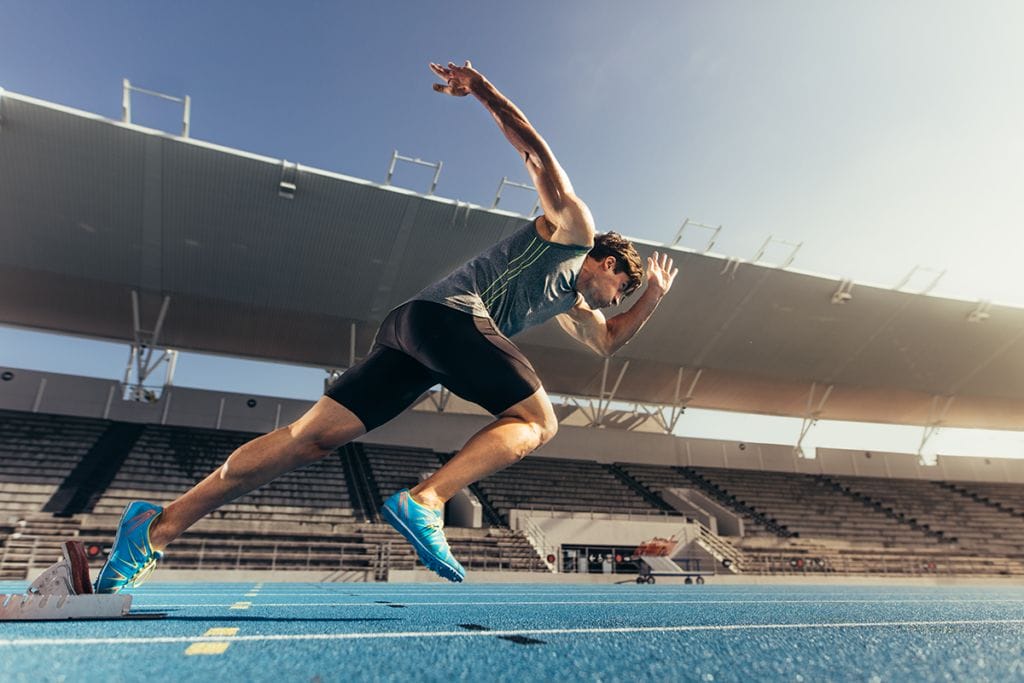Some of the basics of proper running form can be easily overlooked—especially by beginners, but occasionally by seasoned runners.
The Basics Of Running Form
This guide will look at some of the fundamentals behind form—just the basics—without getting too technical.
Keep Your Head Up
When running, keeping the head up and focusing on gazing into the distance, in relation to where you’re running, can dramatically improve your posture.
To get the correct posture down for running, try to visualize your posture when you stand upright and tall with your weight distributed evenly. Ensure your shoulders are relaxed.
Now add a slight forward lean to the equation, and you’re closer to executing proper running form.
Hit the Ground Running
Next, let’s talk about where the foot should strike the ground when you’re in full stride.
The appropriate area for contact should be made directly underneath you – landing on your forefoot, not the toes or heels.
Forefoot striking will dramatically increase your forward propulsion.
Relax a Little
Another thing we want to focus on is keeping a “relaxed” posture that allows the arms to swing freely in and around 90 degrees.
The rhythm you run – or stride turnover – is also a direct reflection of coordinating each step to help propulsion.
This process is also known as cadence, stride frequency, or leg turnover.
Nobody wants to be in a boat with one oar; you won’t get anywhere in a straight line.
Don’t Do The Twist
Another key thing to watch out for when focusing on improving the basics of your running form is accidental rotation in the torso. Your body shouldn’t be twisting or bouncing.
If you can feel yourself bounce or twist when running, what you’re feeling is wasted energy that isn’t going into the forward momentum of each step.
You should be efficient with your torso movements, with a posture that leans forward slightly.
Remember, your body should be relaxed from head to toe, with eyes forward, and clean, effortless arm swings that directly reflect each opposite stride.
In other words, left arm forward = right leg forward.
The Rhythm Is Gonna Get You
Each leg – in rhythm – should strike the ground on the forefoot just behind the toes, then roll up to push into the toes with each step.
Building strong calves, hamstrings, quads, glutes, core, back, shoulders, and arms will increase running efficiency and power.
The more technical side of running explores how the body absorbs impact to store potential energy into the propulsion phase and how long it will take each leg to get back from ground contact to make a complete leg swing cycle.
Putting it all together
Achieving an ideal running form is relative to the unique movement signature of each athlete – distinctive to the individual and dependent on several different factors.
Some of these factors can include characteristics such as the shape of the foot and arch, as well as lower-leg mechanics (whether pronated, neutral or supinated).
Each of these variables can affect how our bodies personally transfer energy and play a huge role in our leg swing mechanics.
Conclusion
Learning about the basics will get any athlete headed in the right direction. For those athletes that run, improving performance starts with understanding and building a proper foundation.

